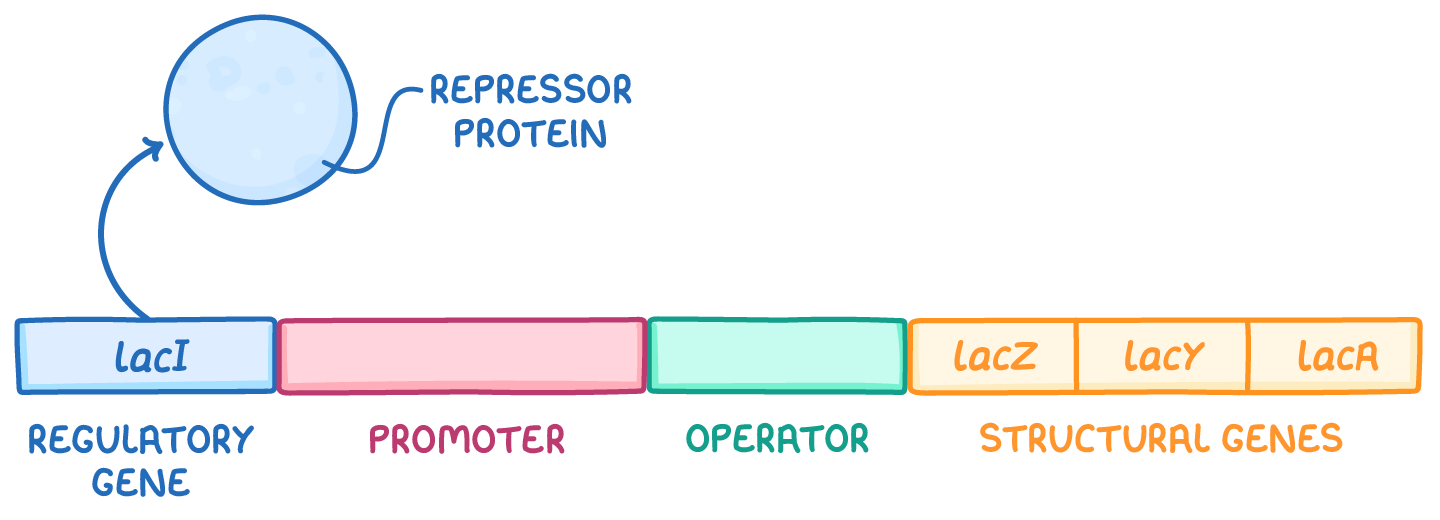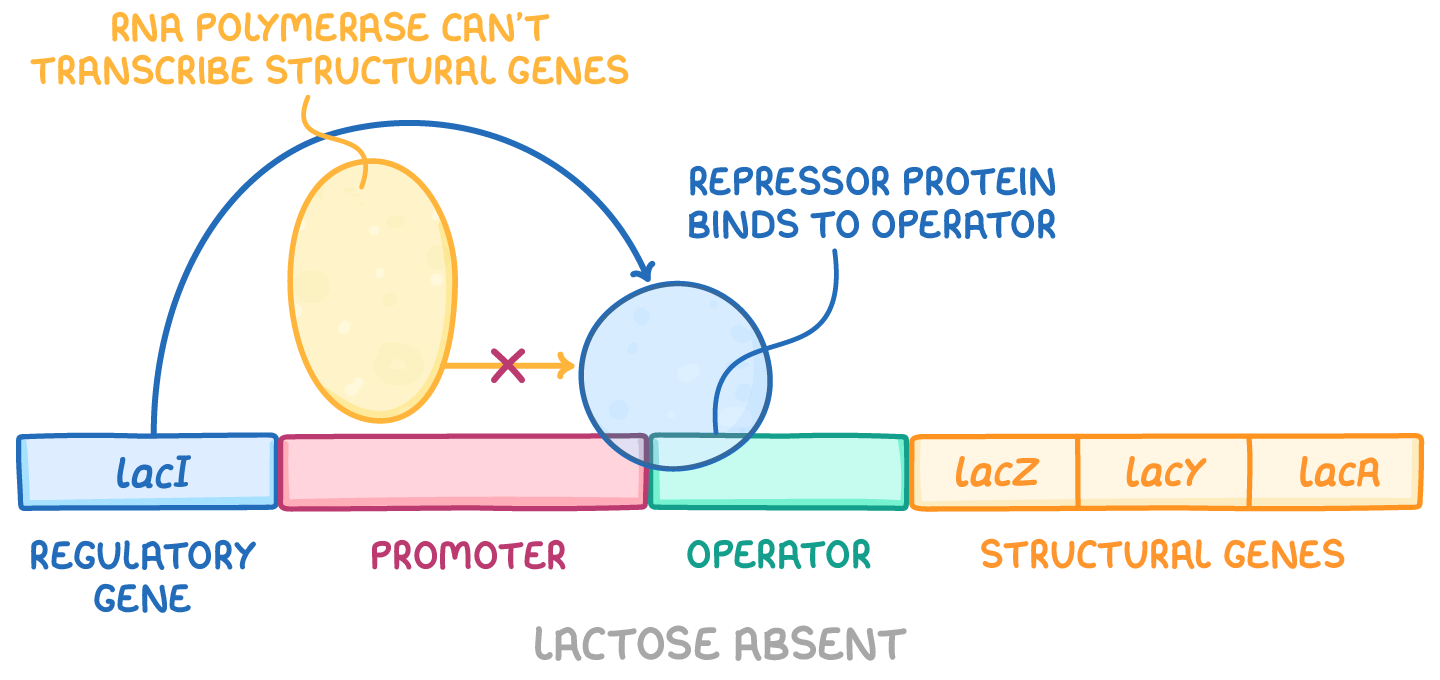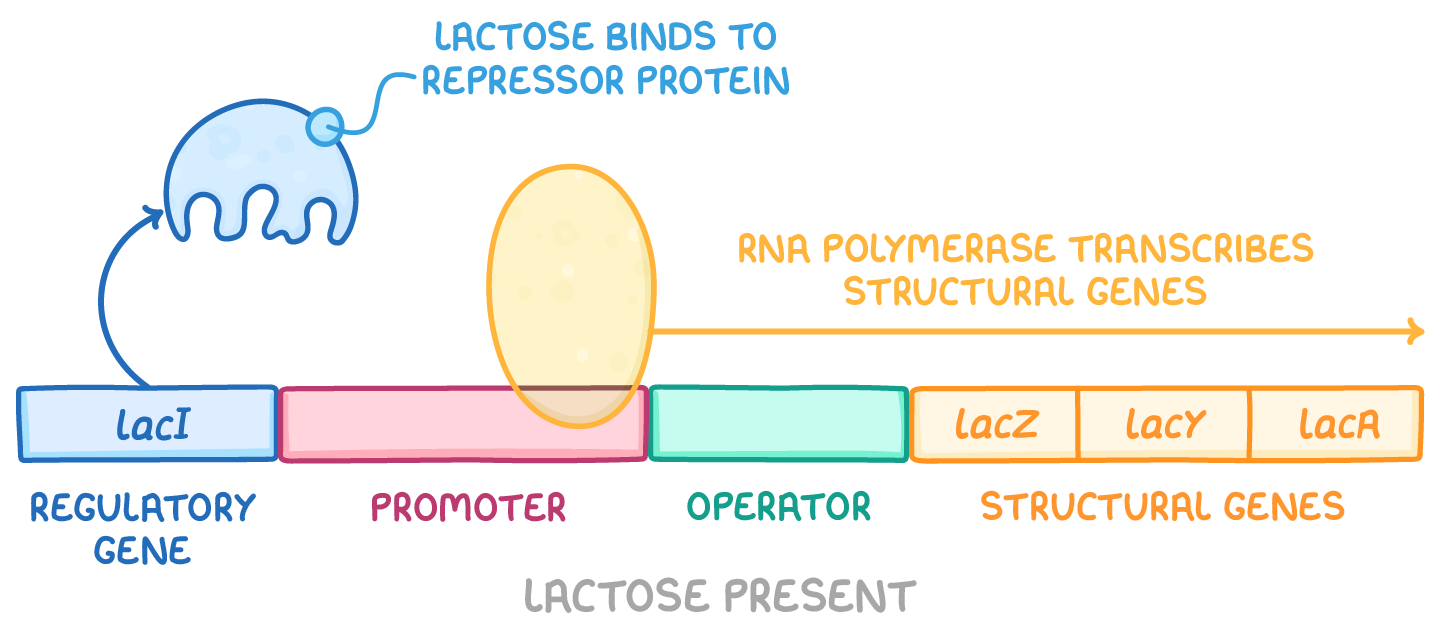Gene Control in Prokaryotes
This lesson covers:
- The structure and function of the lac operon
- The regulation of the lac operon
- Inducible and repressible enzymes
The structure and function of the lac operon
An operon is a cluster of genes controlled by a single promoter, allowing for coordinated expression. This system is particularly efficient in prokaryotes for regulating the expression of multiple genes simultaneously.
Operons consist of several key components:
- Regulatory gene(s) - These encode proteins that regulate the expression of the structural genes.
- A promoter region - This is the site where RNA polymerase binds to initiate transcription.
- An operator region - This is a sequence where regulatory proteins (like repressor proteins) can bind.
- Structural gene(s) - These genes code for proteins, typically enzymes.
The lac operon is a group of genes in the bacterium Escherichia coli that control the metabolism of lactose, allowing them to use lactose as an energy source when glucose is scarce. The genes are controlled by the same promoter region and are transcribed together.

The lacI regulatory gene of the lac operon codes for a repressor protein that can inhibit and control the lac operon's activity.
The lac operon includes three structural genes essential for lactose metabolism:
| Gene | Enzyme | Function |
|---|---|---|
| lacZ | β-galactosidase | Breaks down lactose into glucose and galactose |
| lacY | Lactose permease | Transports lactose into the cell |
| lacA | Transacetylase | Modifies lactose or its by-products |
The regulation of the lac operon by lactose
The lac operon is designed to conserve energy by producing lactose-metabolising enzymes only when lactose is present.
How the lac operon functions when lactose is absent

When lactose is absent:
- The repressor protein binds to the operator region.
- RNA polymerase is blocked from the promoter region.
- RNA polymerase can't transcribe the structural genes.
- The enzymes for lactose metabolism aren't produced.
How the lac operon functions when lactose is present

When lactose is present:
- Lactose binds to the repressor protein.
- The repressor protein changes shape and is released from the operator region.
- RNA polymerase can bind to the promoter region and initiate transcription.
- RNA polymerase transcribes the structural genes, leading to the production of enzymes necessary for lactose metabolism.
This regulatory mechanism ensures enzymes are produced only when needed.
Inducible and repressible enzymes
The lac operon illustrates two fundamental concepts in gene regulation.
- Inducible enzymes
- These are produced only when their specific substrate is available.
- For example, lactose availability induces the production of lac enzymes.
- Repressible enzymes
- These are normally produced continuously but their production can be inhibited when not required.
- For example, the presence of glucose represses the lac enzymes.
Such regulatory mechanisms allow cells to adapt gene expression to environmental changes efficiently.